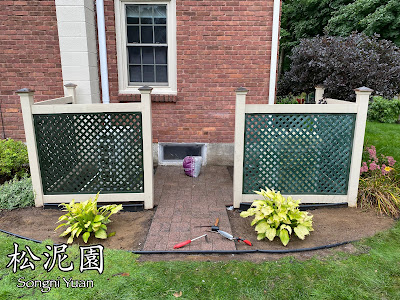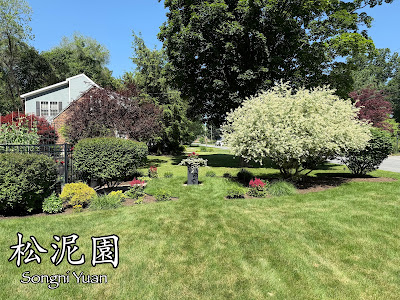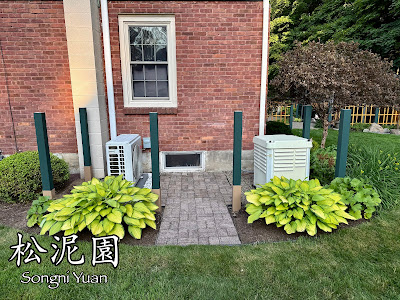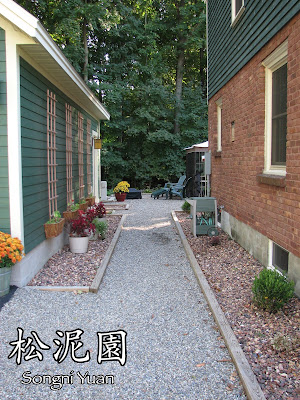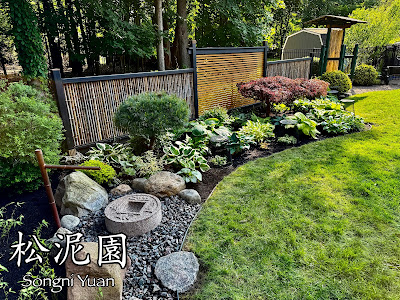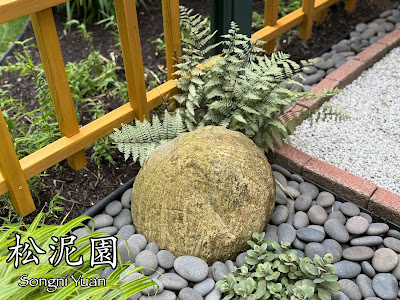There are approximately 70 shrubs within Songni Yuan. As a result, it takes at least four days of meandering around the garden and trimming each shrub. This has become known as "shrub week."
There are too reasons I do this. One, to keep a nice clean shape that enhances the beauty of the garden, and to ensure that shrub growth does not exceed long term expectations for the garden design.
To illustrate, I am showing a video in which I will be trimming the two 'Europa Gold' arborvitae (thuja occidentalis) that are on each side of the Woodland Gate.
These two shrubs can grow to as much as 4-6' over time and I do not want them to grow too large, too fast. By trimming a couple of inches each year I can slow down their growth.
 |
| Before |
 |
| After |
They will eventually fill the area along the gate, but if they grow too large and start to block the entrance to the gate, or impact other nearby plantings, I may have to remove them. Hence, the need to slow the growth.
This is an issue with some of the other shrubs within the garden. However, good maintenance and growth management will ensure that a shrub can last many years in the garden without becoming a problem.






